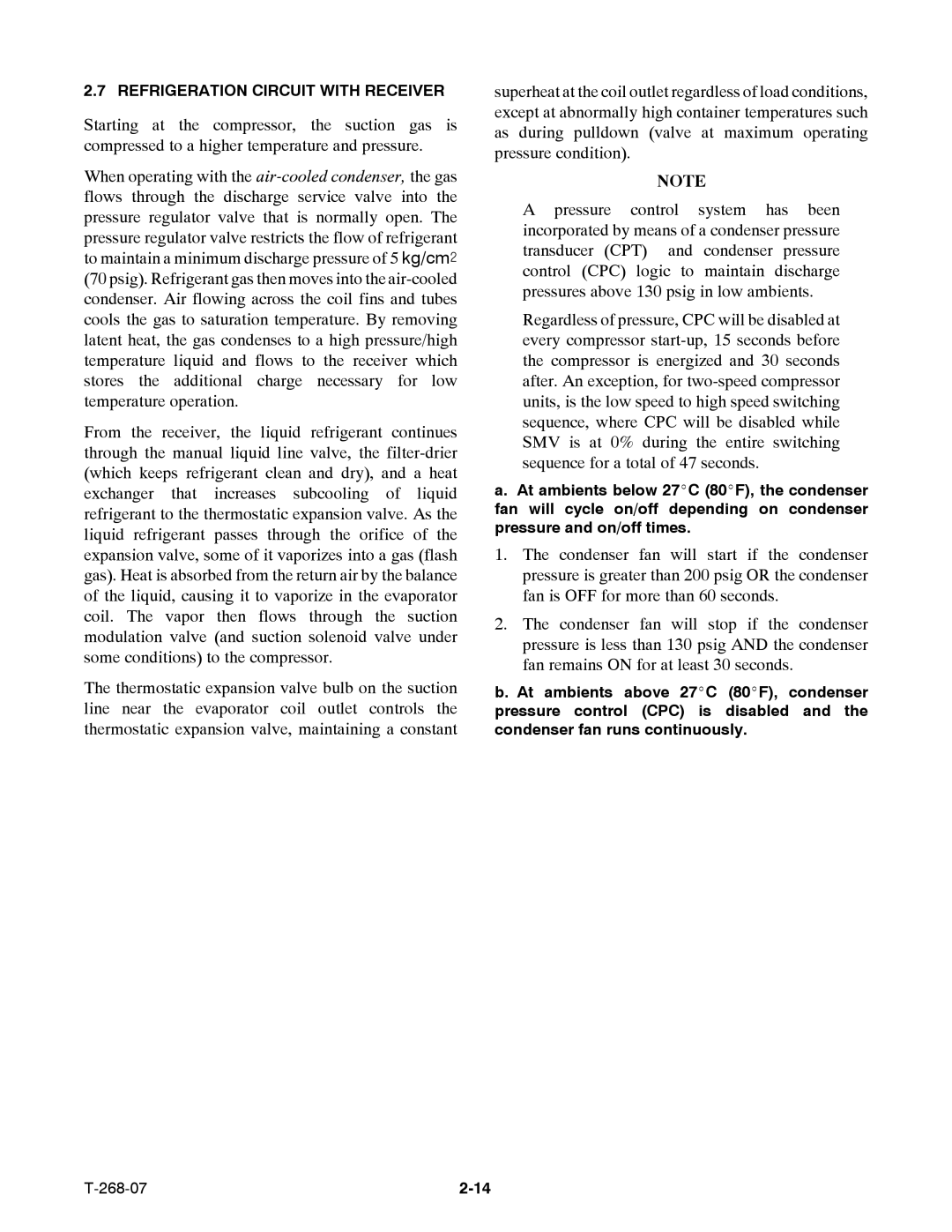2.7 REFRIGERATION CIRCUIT WITH RECEIVER
Starting at the compressor, the suction gas is compressed to a higher temperature and pressure.
When operating with the
From the receiver, the liquid refrigerant continues through the manual liquid line valve, the
The thermostatic expansion valve bulb on the suction line near the evaporator coil outlet controls the thermostatic expansion valve, maintaining a constant
superheat at the coil outlet regardless of load conditions, except at abnormally high container temperatures such as during pulldown (valve at maximum operating pressure condition).
NOTE
A pressure control system has been incorporated by means of a condenser pressure transducer (CPT) and condenser pressure control (CPC) logic to maintain discharge pressures above 130 psig in low ambients.
Regardless of pressure, CPC will be disabled at every compressor
a.At ambients below 27_C (80_F), the condenser fan will cycle on/off depending on condenser pressure and on/off times.
1.The condenser fan will start if the condenser pressure is greater than 200 psig OR the condenser fan is OFF for more than 60 seconds.
2.The condenser fan will stop if the condenser pressure is less than 130 psig AND the condenser fan remains ON for at least 30 seconds.
b. At ambients above 27_C (80_F), condenser pressure control (CPC) is disabled and the condenser fan runs continuously.
